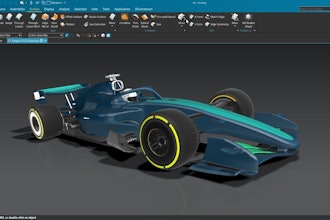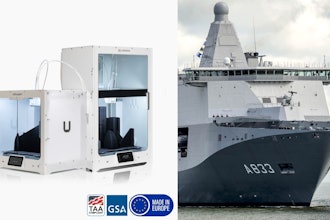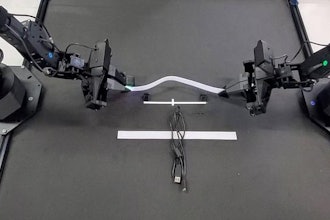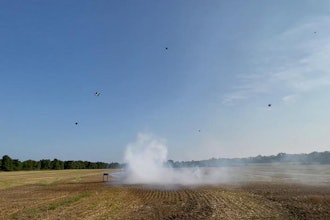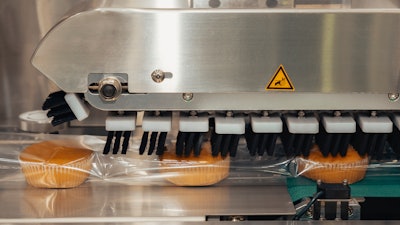
Hiring and retaining qualified personnel, implementing automation, and improving productivity ranked as the top three concerns of consumer packaged goods companies (CPGs) and OEMs, according to “Key Challenges for Packaging and Processing Operations,” a 2021 report published by PMMI, The Association for Packaging and Processing Technologies.
It’s not surprising these priorities rank top-of-mind. The needs intertwine: Automation can help mitigate workforce issues and boost productivity.
What does the term “automation” mean? It includes a range of technologies such as digitalization, remote access, artificial intelligence, the Internet of Things (IoT), and robots and cobots. Robotics are especially crucial to food processing and packaging, and usage is skyrocketing.
The growth of automated solutions
In the first quarter of 2022, more robots were purchased than in any previous quarter, according to the Association for Advancing Automation (A3), with non-automotive segments continuing to outsell automotive, the traditional stronghold for robot applications. The 11,595 robots sold in North America in the first quarter of 2022 represent a double-digit increase versus the fourth quarter of 2021, the previous best quarter on record. It’s also a double-digit increase compared to the first quarter of 2021 with strong performance from the food and consumer goods segment, up 21%.
Robotics offers food manufacturers benefits such as minimizing manual handling, assuming monotonous and physically demanding or dangerous tasks, accelerating line speed, increasing flexibility, reducing downtime, ensuring repeatable quality, enhancing food safety, and minimizing waste and human error.
Combined with this is the fact that today’s robots are more intelligent and durable than previous iterations. They’re significantly faster, capable of lifting heavier loads, and easier to program and operate, reducing the skill level needed for successful deployment. Cobots—robots designed to work with people—now have sensors for feedback, use hand movement-based guides for self-learning, and are more mobile. More functional end-of-arm tooling (EoAT) is capable of picking a larger variety of shapes, reaching deeper, and changing more quickly from one tool to another.
As a result, 98% of OEMs offer robotic-equipped systems, and robot and cobot usage is growing along the entire line, from initial inputs to end-of-line, according to PMMI’s latest research, Robots & Cobots, An Automated Future. Expanded intelligence, mobility, and sensing capabilities are opening up new applications for robots and cobots in processing, primary packaging, secondary packaging and transport packaging. Most CPGs (84%) use robots in their operations, and this number will rise to 93% in the next five years based on PMMI’s research findings.
Challenges & opportunities
Although a majority of CPG companies have deployed robotics, there is still a lot of room for growth. At present, one-fourth have equipped less than 10% of their lines and only one-third have robots on more than 50% of their lines. Three out of five CPG companies using robotics plan to increase installations during the next five years, particularly for secondary and transport packaging applications. Spend will be particularly strong in the food industry, where 80% of respondents plan to buy more robots and cobots during the next two years.
Despite strong interest and lower prices, however, one of the main challenges to the adoption of robotics is ROI justification. This is why CPGs are asking their OEM supplier partners to help them take advantage of the benefits robotics can offer. CPG companies want their OEM partners to:
- Audit operations to identify where robots/cobots should be deployed.
- Provide ROI justification with comprehensive total cost of ownership (TCO) assessment including safety/guarding, installation, maintenance and training.
- Supply lower-cost robots/cobots with easy set-up and installation, including pre-configured application parameters.
- Integrate robot or cobot additions into processing/packaging machines to create a unified system.
- Train and educate engineers and operators on live, digitally integrated robotic lines.
Assisting CPGs with challenges like TCO assessments and ensuring automated solutions are easy to operate can help integrate OEMs even closer with their CPG partners. And implementing these solutions can jointly overcome staffing and productivity challenges, which look set to remain for the near future.
Automation at PACK EXPO International
PACK EXPO International (Oct. 23-26, 2022; McCormick Place, Chicago) will provide dozens of opportunities to see robots, cobots, and specialized EoAT solutions in action performing processing, primary packaging, secondary packaging, and transport packaging tasks.
It is more important than ever that the packaging and processing industries come together to share insights and innovations, and the best place to do that is PACK EXPO International – the most comprehensive packaging and processing show in the world in 2022. From connecting with colleagues and hearing from experts to seeing new technologies, materials, and machinery-in-action, PACK EXPO International is the most efficient and effective way to discover packaging and processing solutions for over 40 vertical markets. No other event this year will showcase entire production line solutions and offer attendees everything needed to compete in a changing marketplace. For more information and to register, visit packexpointernational.com.
Jorge Izquierdo is the vice president of market development at PMMI.










